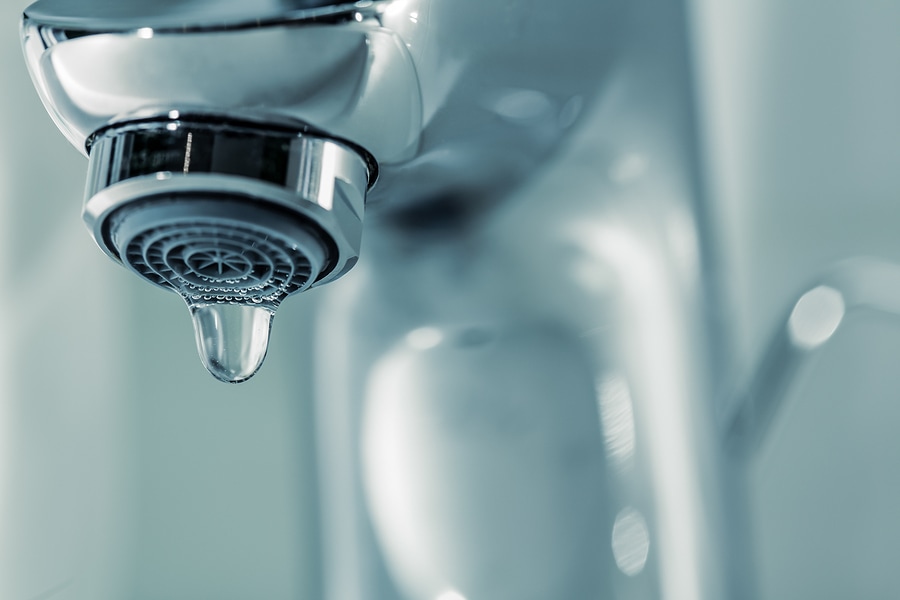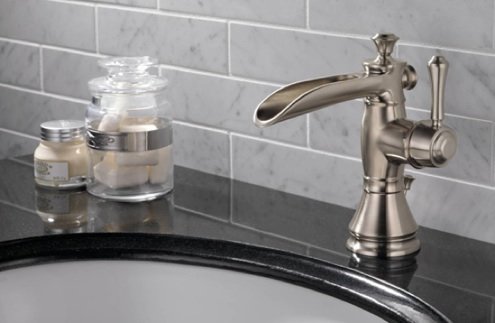How It's Critical to Fix a Broken Faucet
How It's Critical to Fix a Broken Faucet
Blog Article
Everyone may have their private rationale on the subject of Should I Repair or Replace a Leaky Faucet?.

Leaking faucets could look like a minor hassle, but their influence goes beyond simply the inconvenience of the noise. From drainage to incurring unneeded economic expenses and health risks, overlooking a trickling tap can lead to various effects. In this article, we'll explore why it's crucial to resolve this usual household issue quickly and successfully.
Wastefulness of Water
Environmental Effect
Leaking taps add significantly to water wastage. According to the Environmental Protection Agency (EPA), a single faucet leaking at one drip per second can lose greater than 3,000 gallons of water per year. This not only stress water sources but likewise impacts ecological communities and wild animals depending on them.
Financial Expenses
Increased Water Bills
Past the environmental impact, leaking faucets can pump up water bills substantially. The built up wastage gradually converts into greater utility expenditures, which could have been prevented with timely repair services.
Possible Residential Or Commercial Property Damages
Additionally, extended leaking can cause harm to fixtures and surfaces bordering the tap. Water accumulation can trigger staining, rust, and also architectural issues if left neglected, resulting in added repair service prices.
Health and wellness Problems
Mold and Mold Growth
The continuous presence of dampness from a dripping tap creates a suitable environment for mold and mildew development. These fungis not just endanger indoor air top quality but additionally present health risks, particularly for people with breathing conditions or allergic reactions.
Waterborne Diseases
Stationary water in trickling taps can become a breeding place for germs and various other microorganisms, increasing the threat of waterborne illness. Pollutants such as Legionella germs prosper in stagnant water, possibly causing major illnesses when ingested or inhaled.
DIY vs. Professional Repair
Pros and Cons of DIY Repair Work
While some might attempt to repair a leaking tap themselves, DIY repair work come with their very own set of challenges. Without appropriate knowledge and tools, DIY attempts can aggravate the problem or lead to incomplete repair work, extending the trouble.
Benefits of Hiring a Professional Plumber
Working with an expert plumber makes certain that the underlying source of the trickling tap is dealt with successfully. Plumbing technicians possess the competence and devices to detect and fix tap problems successfully, saving time and reducing the danger of additional damages.
Step-by-Step Guide to Repairing a Dripping Tap
Tools Called for
Prior to attempting to deal with a trickling faucet, collect the needed tools, including a flexible wrench, screwdrivers, substitute components (such as washers or cartridges), and plumber's tape.
Typical Tap Issues and Their Solutions
Determine the kind of faucet and the specific concern creating the drip. Typical troubles consist of worn-out washers, rusty shutoff seats, or damaged O-rings. Refer to producer instructions or online tutorials for step-by-step support on repair services.
Safety nets
Routine Maintenance Tips
To avoid leaking taps, do regular maintenance such as cleaning up aerators, evaluating for leakages, and replacing worn-out components promptly. Additionally, consider mounting water-saving tools or upgrading to much more effective components.
Importance of Prompt Fixes
Addressing dripping taps as quickly as they're discovered prevents further water wastage and possible damage, inevitably saving both water and money in the future.
Influence On Building Value
Perception of Well-Maintained Home
Keeping a residential property in good condition, consisting of resolving upkeep problems like dripping taps, boosts its regarded value and value amongst prospective customers or lessees.
Impact on Resale Worth
Characteristics with well-maintained plumbing components, consisting of taps, command greater resale values in the property market. Resolving dripping faucets can add to a favorable impression throughout building assessments and arrangements.
Ecological Responsibility
Individual Contribution to Preservation
Taking duty for taking care of trickling taps lines up with wider efforts towards water preservation and environmental sustainability. Every individual's activities collectively make a significant effect on maintaining priceless sources.
Lasting Living Practices
By prioritizing timely repairs and taking on water-saving habits, individuals contribute to lasting living techniques that benefit both present and future generations.
Verdict
Resolving a trickling tap surpasses plain benefit; it's an important action towards saving water, reducing monetary prices, and protecting wellness and home. Whether through DIY repair work or specialist help, taking action to deal with leaking taps is a little yet impactful method to advertise liable stewardship of sources and add to a healthier, extra sustainable future.
How to Fix a Dripping or Leaky Faucet
A leaking faucet is one of the most common problems that homeowners encounter, but it being commonplace doesn’t make it any less annoying. The constant drip drip drip of a leaking bathtub faucet, showerhead, or sink tap can disturb your home’s serenity. Left neglected, a dripping faucet can also result in higher water bills and discoloration or mold growth in your sink or plumbing fixtures.
Fortunately, you don’t have to be a trained plumber to know how to stop a dripping faucet. With some basic tools, replacement parts, and a little patience, leaky faucet repair is a breeze. In this article, we’ll explain what causes dripping faucets and how you can fix them.
What Causes a Leaking Faucet?
Kitchen and bathroom faucets come in all manner of designs, but most involve some combination of valves, O-rings, seals, and washers. The O-ring is usually the weakest link, but any one of these pieces can wear down over time. Heat, moisture, temperature fluctuations, minerals, mold, and movement can contribute to warping and corrosion, breaking the watertight seal. This just comes with the territory of being a homeowner. Everything is always subject to wear and tear, and some component parts of your appliances and fixtures need to be replaced on occasion. At least replacement O-rings are cheap!
More rarely, dripping faucets can be a symptom of excessively high water pressure. Were this the case in your home, you would probably notice that the leak is not isolated to one faucet. Water pressure issues are harder to resolve on your own. We recommend contacting a professional plumber if you suspect your water pressure is too high.
How to Fix a Dripping Faucet
Pipe wrench or monkey wrench Allen wrench set Screwdrivers Old towel or rag Shut off the water.
Before you do anything, you need to turn off the water to keep from drenching your kitchen or bathroom. You should find a valve under the sink and against the wall. Once you’ve turned this valve, try turning the faucet on to confirm that the water source has been cut off.
If you can’t locate your local valve for the faucet you’re working on, you can always shut off the water to the house at the main valve. Of course, this will prohibit anyone from using the sinks, showers, or toilets while you’re working on the faucet that’s giving you trouble.
Plug or block the drain.
You’ll be disassembling the faucet and removing some small bits of hardware. Plug the drain with a stopper or rag to avoid the possibility of a small screw falling into your P-trap.
Take apart the faucet assembly.
There are several varieties of kitchen and bathroom faucets, each with its own manner of assembly. For detailed instructions on how to disassemble your faucet, you can refer to the fixture’s manual or contact the manufacturer. If you know whether you have a ball, disc, cartridge, or compression faucet, you can find detailed schematics online.
In general, you need to begin by removing the faucet handles. You might notice a small screw that you’ll need to remove with a screwdriver or Allen wrench. If you don’t see any visible securing hardware, it’s likely hidden under a decorative cap that can be unscrewed or popped off with flathead screwdriver.
Remove each piece methodically, consulting a schematic when necessary. Take notes or arrange the pieces in such a way to make it easier to correctly reassemble the faucet later.
Remove the cartridge.
Once you’ve removed the handles and securing hardware, you should be able to remove the valve cartridge or stem. Some cartridges will slide right out. Other faucet models will require you to loosen a nut with a pipe wrench before you can remove the valve stem.
Examine the exposed hardware.
With the cartridge or stem removed, inspect the component parts. Check the rubber O-rings for wear and tear. Also examine the seat washer for corrosion or other damage. These pieces are usually the responsible parties for a dripping faucet, but it’s worth inspecting the other component parts while you have the faucet disassembled.
Find replacement parts.
Once you’ve identified which faucet component has failed, find an identical replacement. Your local hardware store should have O-rings, seat washers, and other standard components in stock. If you have a luxury or uncommon faucet, you may have to contact the manufacturer for a replacement part.
It’s a good idea to take your old parts with you to the hardware store so you can compare them with the store’s inventory and be sure you’re purchasing the correct replacement.
Reassemble the faucet.
With your new parts in hand, reconstruct the faucet and handles. Don’t be tempted to overtighten screws or nuts. You might think this could create a better seal, but it can instead damage or bend a delicate part of the assembly and create a new problem for you.
Turn on the water and test the faucet.
The only thing left to do is test your work. Unplug the sink, turn the water back on, and try the faucet. Congratulate yourself on a job well done!
https://www.libertyhomeguard.com/how-to-fix-a-dripping-or-leaky-faucet/

We hope you enjoyed our post on What Causes Leaky Faucets & How To Fix Them. Thanks a lot for taking a few minutes to read through our piece of content. Kindly set aside a second to promote this blog post if you enjoyed reading it. We truly appreciate your readership.
Report this page